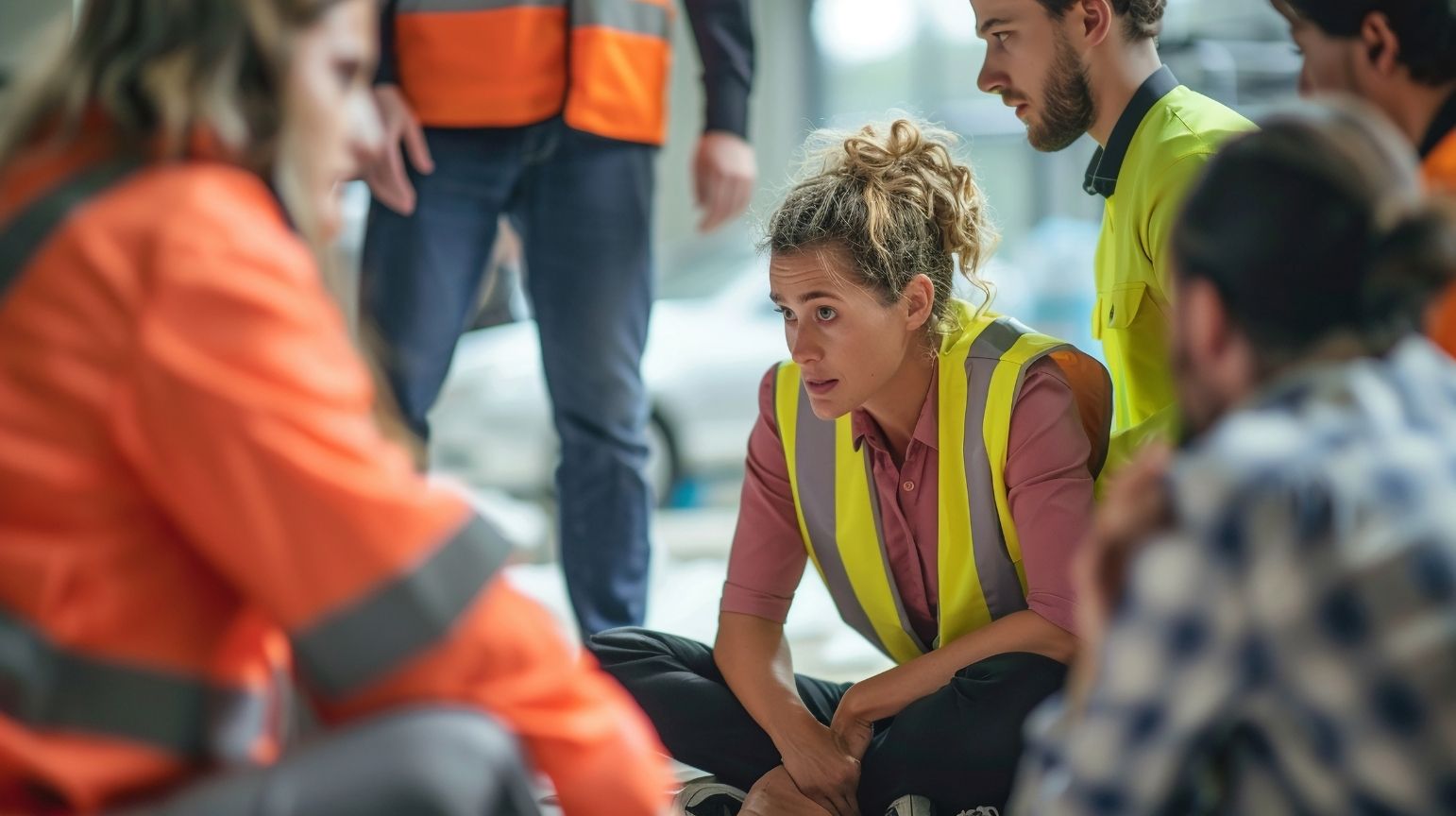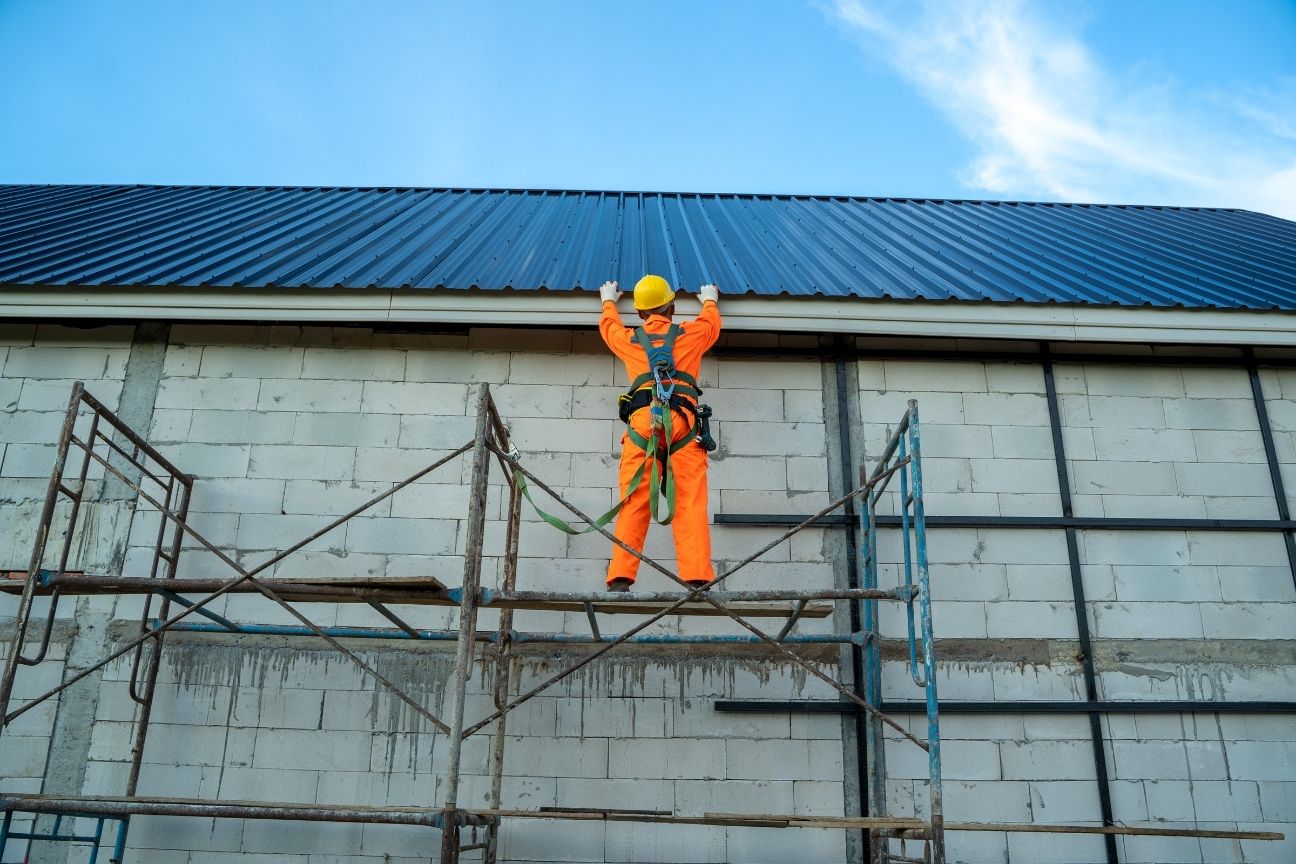In emergencies, whether natural disasters or humanitarian crises, the establishment of temporary infrastructure is essential. These can range from makeshift hospitals and shelters to communication networks. Understanding the nuances of this setup can mean the difference between life and death.
Introduction
Temporary infrastructure refers to the quickly established facilities and systems necessary during emergencies. This includes shelters, hospitals, and communication networks designed to support affected individuals. In crisis situations, these setups play a vital role in ensuring safety and survival.
Effective temporary infrastructure can literally save lives. When immediate response is crucial, well-planned setups can provide shelter, medical care, and essential services. The key is to create these structures quickly and efficiently. Failure to do so may lead to increased suffering, inadequate medical attention, and loss of life.
Understanding the role of temporary infrastructure is essential for anyone involved in emergency response. Local governments, NGOs, and humanitarian organizations must prioritize rapid deployment and effective design. Only then can they offer effective support that meets community needs during crises.
In this article, we will explore five critical insights on how temporary infrastructure can drastically improve outcomes in emergencies. By focusing on these insights, stakeholders can better prepare and respond to future challenges.
Insight 1: The Necessity of Speed in Deployment
In emergencies, every second counts. The critical window for response often determines who receives help and who does not. When disasters strike, quick action can save lives. Delays can lead to dire consequences, so understanding the importance of speed in temporary infrastructure setup is vital.
The Impact of Rapid Deployment
To illustrate, consider the devastation caused by Hurricane Katrina in 2005. The delay in deploying temporary shelters exacerbated the crisis. Thousands were left without basic needs for days. Fast setup can make the difference between life and death. It creates a safety net, allowing emergency services to focus on those in dire need.
Strategies for Quick Deployment
Developing a framework for rapid deployment is essential. Here are some strategies to consider:
Pre-positioning Resources: Stockpile supplies and equipment in strategic locations. This ensures they are ready for immediate use when disaster strikes.
Training Mobile Teams: Train teams to establish temporary infrastructure quickly. Simple drill exercises help build efficiency and teamwork.
Utilizing Technology: Employ drones and advanced logistics software for assessments. This tech can offer real-time data, enabling faster decision-making.
Designing for Flexibility and Adaptability
When emergencies strike, the situation can shift rapidly. Therefore, temporary infrastructure must be designed for flexibility and adaptability. This concept helps responders pivot quickly to meet evolving needs. For instance, a shelter might initially serve refugees but later transform into a medical facility as circumstances demand.
Why Flexibility Matters
Flexibility is crucial in emergency scenarios. The landscape could change due to worsening weather, increased casualties, or new safety risks. A rigid structure can hinder response efforts, whereas adaptable designs facilitate timely adjustments. Responders can optimize limited resources and improve outcomes by embracing this principle.
Modular Designs Lead the Way
One effective solution is modular designs. These systems consist of prefabricated units that can be assembled and disassembled easily. Manufacturers design these units for various purposes, enabling quick modifications based on the situation. For example, after a hurricane, a modular unit might initially act as temporary housing. Later, it could serve as a distribution center for food and supplies.
Scalable Solutions for Every Situation
Scalability is another critical aspect of flexible infrastructure. Temporary setups should have a built-in capacity to expand or shrink as the emergency evolves. This could mean establishing a small clinic that can increase its beds and staff in response to rising patient numbers. Such scalability ensures that resources align with the immediate needs of the affected population.
Successful Case Studies
Several case studies highlight successful implementations of flexible infrastructure. After the 2010 earthquake in Haiti, organizations used modular units to provide immediate shelter. These structures could shift from housing to medical support as local hospitals became overwhelmed. The ability to adapt helped save countless lives and streamlined resource distribution.
Similarly, during the COVID-19 pandemic, cities worldwide erected field hospitals. They employed flexible designs to accommodate various functions as the situation developed. These spaces evolved from testing sites to treatment facilities, showcasing the power of adaptability in real-time applications.
Insight 3: Integration of Emergency Support Services
In emergencies, effective collaboration can save lives. Emergency Support Services (ESS) play a vital role in this landscape. They include medical services, logistics, transportation, and communication. When agencies work together, they form a robust response network. This network enables quick and efficient temporary infrastructure setups.
The Importance of Collaboration
Collaboration among various agencies is essential. Each organization brings unique skills and resources to the table. When they unite, they improve the overall response. For instance, a healthcare provider can coordinate with logistics teams to ensure medical supplies reach affected areas quickly. This synergy enhances the speed and effectiveness of emergency responses.
Role of Emergency Support Services
Emergency Support Services streamline operations during crises. They assess needs, allocate resources, and coordinate on-the-ground activities. For example, during Hurricane Katrina, agencies like FEMA and the Red Cross collaborated. Their joint efforts helped establish temporary shelters and medical facilities swiftly. This collaboration demonstrated that a well-integrated response can mitigate chaos and confusion.
Examples of Successful Joint Operations
Successful joint operations offer valuable lessons. During the 2010 Haiti earthquake, a coalition of local and international agencies formed a unified response team. They combined expertise in logistics, healthcare, and engineering. Their collaboration led to the quick establishment of temporary hospitals and clinics, which provided lifesaving care to thousands.
Another example can be seen during the COVID-19 pandemic. Various health organizations and governments worked together to set up testing sites and vaccination centers promptly. This integration of services ensured that communities received the necessary support when they needed it most.
Best Practices for Integration
To achieve effective integration, agencies should prioritize communication. Regular meetings and updates foster transparency and trust. Furthermore, training exercises that involve multiple agencies can enhance coordination. These practices help create a more agile response team ready to tackle challenges in real-time.
In summary, integrating Emergency Support Services is crucial for successful temporary infrastructure deployment. By working together, agencies can provide timely and effective assistance, ultimately saving lives in emergencies.
Insight 4: Infrastructure Efficiency to Optimize Resources
When establishing temporary infrastructure in emergencies, efficiency is key. This means managing resources wisely while ensuring quick and effective response. Every drop of water and every watt of energy counts. Let’s explore how to optimize resource management in these critical situations.
The Role of Resource Management
Effective resource management prevents waste and maximizes impact. In chaotic situations, careful planning can make all the difference. For instance, understanding local needs can reduce excess supply. This allows responders to focus on what truly matters, such as food, medical supplies, and clean water. By gathering data on immediate needs, organizations can allocate resources where they are most needed.
Embracing Technologies for Efficiency
Technology has revolutionized emergency response. Innovative solutions can streamline logistics and enhance resource allocation. For example, using drones to survey affected areas helps identify the best locations for temporary shelters and medical stations. This ensures that resources flow where they will have the most significant effect.
Moreover, renewable energy sources offer sustainable alternatives. Solar panels can power temporary hospitals, reducing reliance on diesel generators. This not only decreases fuel costs but also lowers the overall carbon footprint of emergency operations. When organizations leverage solar energy, they ensure continuity and reliability in power supply, which is critical in life-saving situations.
Learning from the Best
Organizations worldwide have demonstrated excellence in utilizing infrastructure efficiently during emergencies. The Red Cross, for instance, has implemented advanced logistics software to track supplies in real-time. This approach ensures that teams on the ground know what is available and where to send it.
In the aftermath of Hurricane Harvey, FEMA effectively deployed temporary shelters equipped with essential services. By using modular designs, they adapted quickly to shifting needs. Teams reassessed and modified shelter locations based on real-time data, ensuring that help reached those most affected.
Collectively, these strategies exhibit that efficiency isn’t just about having resources; it’s about using them smartly. Emphasizing resource management during temporary infrastructure setups can lead to lives saved and communities restored more swiftly and effectively.
Insight 5: Proactive Risk Management Strategies
When emergencies strike, preparation can save lives. Proactive risk management ensures that temporary infrastructure can withstand adverse conditions. This strategy involves thorough assessments before disaster hits. Here’s how to identify risks and mitigate them effectively.
Importance of Risk Assessment
Understanding vulnerabilities in your infrastructure setup is crucial. Conducting a risk assessment helps identify potential weaknesses. For example, you might find that certain materials may not withstand high winds or flooding.
Prioritize areas that need attention. This prevents unforeseen challenges during deployment. The goal is to ensure that temporary infrastructure is both resilient and effective.
Best Practices for Identifying Vulnerabilities
Developing a checklist for potential vulnerabilities is a smart move. Consider factors like environmental conditions, geographical features, and community needs. Engage local experts to help pinpoint specific risks. They can offer insights that data alone may not reveal.
Furthermore, utilize tools such as Geographic Information Systems (GIS). GIS maps can highlight areas prone to natural disasters. This allows for better planning and placement of temporary structures when emergencies arise.
Successful Case Studies
Several organizations have implemented proactive risk management with outstanding results. After Hurricane Sandy, for instance, New York City re-evaluated its emergency plans. They focused on identifying flood-prone areas and adjusting their infrastructure accordingly. As a result, their temporary shelters were better situated to provide safety and quick access to resources.
Another example comes from the 2010 Haiti earthquake response. Relief efforts implemented risk assessments of their temporary housing solutions. This approach led to better designs that could resist aftershocks while also addressing long-term community needs.
Conclusion
In summary, proactive risk management is vital for effective temporary infrastructure setup. By assessing vulnerabilities ahead of time and learning from past experiences, we can create efficient, resilient solutions. Keep these strategies in mind to enhance preparedness and ensure that you’re ready when emergencies arise.







